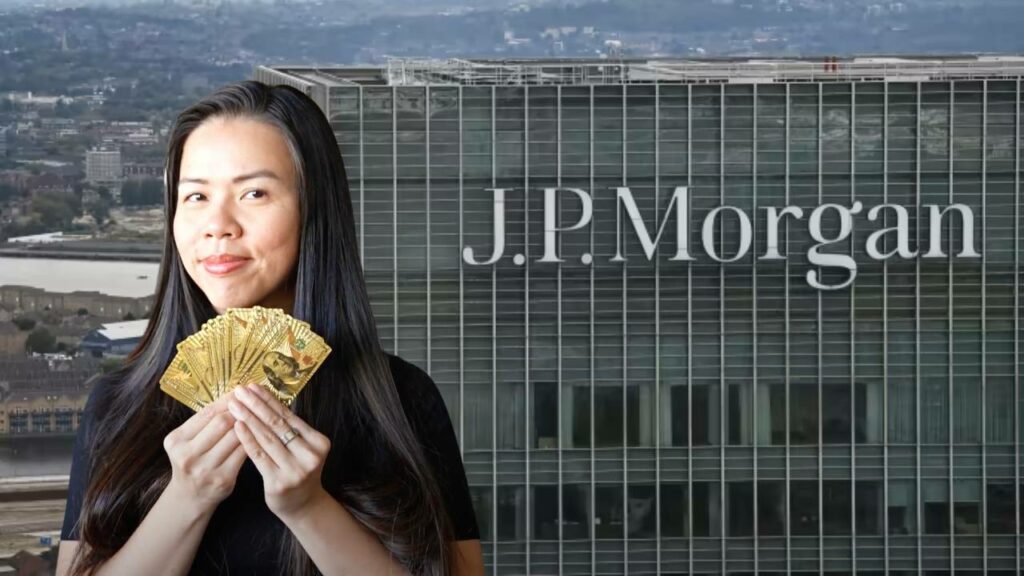Join me on an intriguing journey as we unravel the captivating story of how JP Morgan Chase, the financial giant we all know today, came into being. From its humble beginnings as a purified water supplier in New York to becoming the titan of the banking world, JP Morgan Chase’s evolution is nothing short of awe-inspiring.
Unveiling JP Morgan Chase: A glimpse into financial supremacy
Imagine over 3.7 trillion dollars in assets, a network of more than 5,100 branches, and a workforce of over 250,000 employees. This, my friends, is the sheer scale of the largest bank in the United States—JP Morgan Chase.
The rise of a financial giant: Unraveling the story
So, what’s the secret behind JP Morgan Chase’s meteoric rise? How did a company with such commanding authority and power come into existence? Let’s rewind the clock and embark on a journey to the late 19th century—a time when the United States was on the cusp of becoming a global economic force, and the American market was gradually taking shape.
Picture this: Wall Street, a small banking firm, and a young, promising individual named John Pierpont Morgan. With a profound influence from his father, Junius Morgan, an esteemed banker, John was destined for greatness.
In the early 1850s, Junius formed connections with a London-based firm, opening doors to European wealth. He envisioned a similar path for his son—forging new connections, uncovering investment opportunities, and leaving a mark on the American market.
A proactive visionary: John Pierpont Morgan’s journey
Now, let’s zoom in on the ambitious young man himself. It’s 1861, and John Pierpont Morgan decides to break free from the monotony of a Wall Street clerk’s life. Armed with determination, he establishes his first firm and swiftly earns a reputation as a reliable American banker.
As fortune would have it, the American economy experiences a surge after the conclusion of the Civil War. Yet, by the age of 33, JP Morgan finds himself disillusioned with the banking sector. But his father, Junius, intervenes, offering a new partnership with the experienced Philadelphia banker Anthony Drexel.
And so, in 1871, Drexel, Morgan & Co emerges, a partnership that would lay the groundwork for what we know today as JP Morgan & Co. JP Morgan’s focus on the railroad industry marks him as a trailblazer, investing actively and playing a pivotal role in corporate management.
Steeling success: A magnate’s ambition
Fast-forward to the turn of the 20th century, and JP Morgan’s influence knows no bounds. His sights are set on the steel industry, mirroring his success with railroads by consolidating numerous small businesses into a single juggernaut.
Ads
In a historic move, JP Morgan acquires Andrew Carnegie’s Steel Company, and in 1901, the United States Steel Corporation is born, valued at a staggering 1.4 billion dollars—the world’s first billion-dollar corporation. Around the same time, Morgan orchestrates the merger of the two largest US railroads, forming the Northern Securities Company. However, this venture meets its end under Roosevelt’s presidency, dissolved to prevent a railroad monopoly.
JP Morgan Chase’s unwavering influence
The power and the legacy: Morgan’s impact on America
As JP Morgan’s power grew, so did the public’s unease. Whispers circulated that he was inching close to owning the very fabric of the United States. Notably, two American presidents sought his expertise during economic crises, even though it’s ironic that one of them, Roosevelt, eventually prosecuted him.
Morgan’s influence was so profound that upon his passing, a unique honor was bestowed. The New York Stock Exchange suspended trading until noon on the day of JP Morgan’s funeral—a gesture usually reserved for heads of state.
A new era: Jack Morgan and global expansion
With the passing of John Pierpont Morgan in 1913, the reins were handed over to his son, Jack. The company’s momentum remained undeterred, forging ahead with vigor. By the roaring 1920s, JP Morgan had solidified its position as a premier global bank. Its influence extended not only across the United States but also reached into the heart of Europe and beyond.
Unearthing the other half: The birth of a water supplier and a bank
But wait, there’s another captivating chapter in JP Morgan Chase’s story—one that traces back to 1799, a time when New Yorkers faced a dire need for clean water. The grim reality of limited access to safe water led to rampant disease and a devastating yellow fever epidemic.
In a stroke of visionary thinking, Alexander Hamilton and Aaron Burr took action. The solution? The birth of the Manhattan Company, intended to provide purified water to the city. Now, you might be wondering how this connects to the banking industry. Well, obtaining a banking license back then was no small feat.
When granting a charter to the water company, Hamilton and Burr cleverly inserted a clause that allowed them to establish a bank. Remarkably, the city governor approved this unique charter, paving the way for the creation of the Bank of the Manhattan Company within a mere six months.
Banks and beyond: Evolving for a dynamic future
The legacy continued to unfold as the Bank of the Manhattan Company thrived, serving as a template for simpler bank openings in the years to come. Meanwhile, another player, the Chemical Bank, entered the scene. Originally focused on producing medicines, paints, and dyes, it gradually transitioned into finance, becoming the New York Chemical Manufacturing Company.
Ads
Across centuries, both the Bank of Manhattan Company and the Chemical Bank underwent multiple mergers. In a pivotal moment in 1955, the Bank of the Manhattan Company merged with the Chase National Bank—then the third-largest bank in the US—to become the Chase Manhattan Bank.
Fast forward to 1996, and the Chemical Bank joined forces with Chase Manhattan, resulting in the birth of the largest US banking entity, boasting assets of nearly 300 billion dollars.
Innovation and leadership: Pioneering the modern banking landscape
The latter half of the 20th century witnessed an exhilarating surge in banking advancements. Emerging technologies like electronic banking, credit cards, and ATMs revolutionized the industry. Among the trailblazers was none other than Chase Manhattan Bank, leaving an indelible mark on the evolving financial landscape.
A transformative union: The birth of JP Morgan Chase & Co

A new millennium, a new identity
The dawn of the 21st century brought seismic changes to the financial landscape. In the year 2000, J.P. Morgan merged with Chase Manhattan, a union that paved the way for the brand we recognize today: J.P. Morgan Chase & Co. Talk about creating a financial powerhouse! But the story doesn’t stop there.
Fueling growth: The synergy of mergers and expansions
Just four years later, in 2004, JPMorgan Chase took another giant leap by merging with Bank One, propelling its influence and reach even further. And let me share a jaw-dropping statistic with you: JPMorgan and its predecessors played a role in nearly one-fourth of all the notable bank mergers over the past century. Now, that’s what I call leaving a mark!
Navigating troubled waters: The 2008 financial crisis
Ah, the 2008 financial crisis—a tumultuous period that tested the mettle of financial institutions worldwide. But guess who was ahead of the curve? JPMorgan Chase. When Lehman Brothers filed for bankruptcy in that tumultuous year, JPMorgan Chase emerged as a beacon of stability. Harvard Business Review went so far as to label it “the healthiest of America’s big banks.”
However, even this stalwart faced the storm head-on. JPMorgan Chase accepted a $25 billion bailout from the Federal Reserve—a piece of the $700 billion puzzle that was the total bailout bill for the financial system that year.
A bold move: Stepping in to save the day
But JPMorgan Chase didn’t just take the bailout and sit back. No, it saw an opportunity to contribute to the recovery. It stepped up to acquire two companies on the brink of collapse: Bear Stearns and Washington Mutual, affectionately known as WaMu.
Yet, even amidst the tempest, there’s room for introspection. In a candid interview with CNBC, Jamie Dimon, the CEO of JPMorgan Chase, admitted that the decision to buy Bear Stearns was a mistake—an intriguing insight into the high-stakes world of finance.
Weathering the storm: A resilient journey
Through the ups and downs, JPMorgan Chase stood its ground and continued to flourish. Let the numbers speak for themselves—since 2009, JP Morgan’s stock growth has consistently outperformed the Nasdaq. The resilience is truly commendable.
A full picture: Shadows and triumphs
Now, let’s address the elephant in the room—scandals. Like any significant institution, JPMorgan Chase hasn’t been without its controversies. But don’t worry, we’ll save that discussion for another episode, where we dive deep into the complex world of financial dramas.



